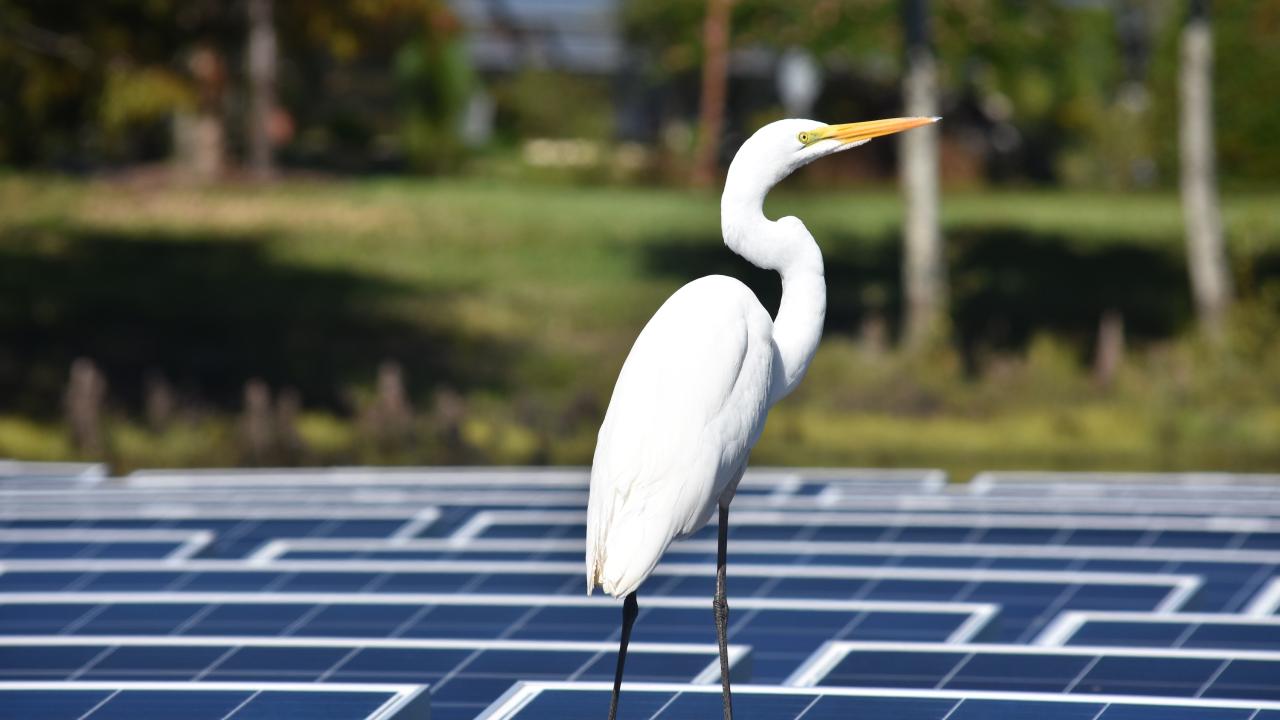From a small California winery to a large-scale energy project in China, floating photovoltaics — or “floatovoltaics”— are gaining in popularity. Commonly installed over artificial water bodies, from irrigation ponds and reservoirs to wastewater treatment plants, floating solar projects can maximize space for producing clean energy while sparing natural lands.
But where there is water, there are waterbirds. Little is known about the impacts — positive or negative — floating solar projects may have on birds and other wildlife. A paper from the University of California, Davis, published in the journal Nature Water, is among the first to outline key considerations to better align renewable energy and biodiversity goals.
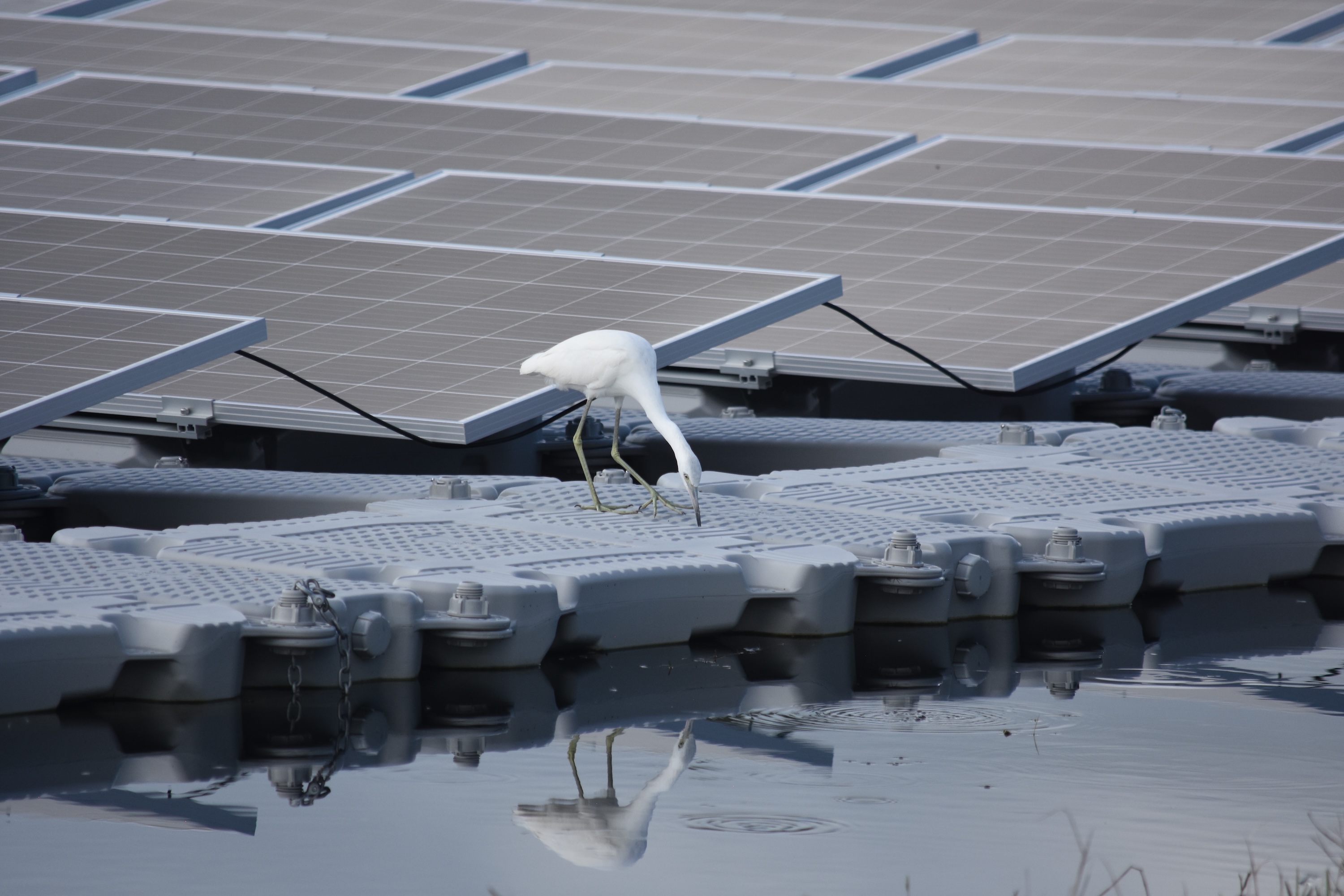
Birds face many threats — from habitat loss and climate change to pollution and avian influenza — and many populations are in decline.
“That’s why it’s so important to understand how waterbirds are going to respond to floating solar and if there is the possibility for conservation concessions at new floating solar facilities,” said corresponding author Elliott Steele, a postdoctoral scholar with the UC Davis Wild Energy Center within the Energy and Efficiency Institute. “We want to advance clean energy while promoting healthy, functional environments. Achieving this balance requires that we rigorously study and understand how wildlife responds to floating solar so we can ensure that negative impacts are avoided and potential ecological benefits are realized.”
Five considerations
Drawing from their scientific field observations of birds interacting with floating PV systems, the authors examined various ways such systems could impact birds, and vice versa. They concluded that future research on FPV-waterbirds interactions should examine:
- How waterbirds interact with each part of the floating PV infrastructure.
- The direct and indirect effects waterbirds and floating solar projects may have on each other.
- How bird conservation strategies may vary by site, region or season.
- How to best monitor waterbirds at floating solar sites.
- The potential for pollutants to be released or leached from floating solar infrastructure and what can be done to mitigate risks.
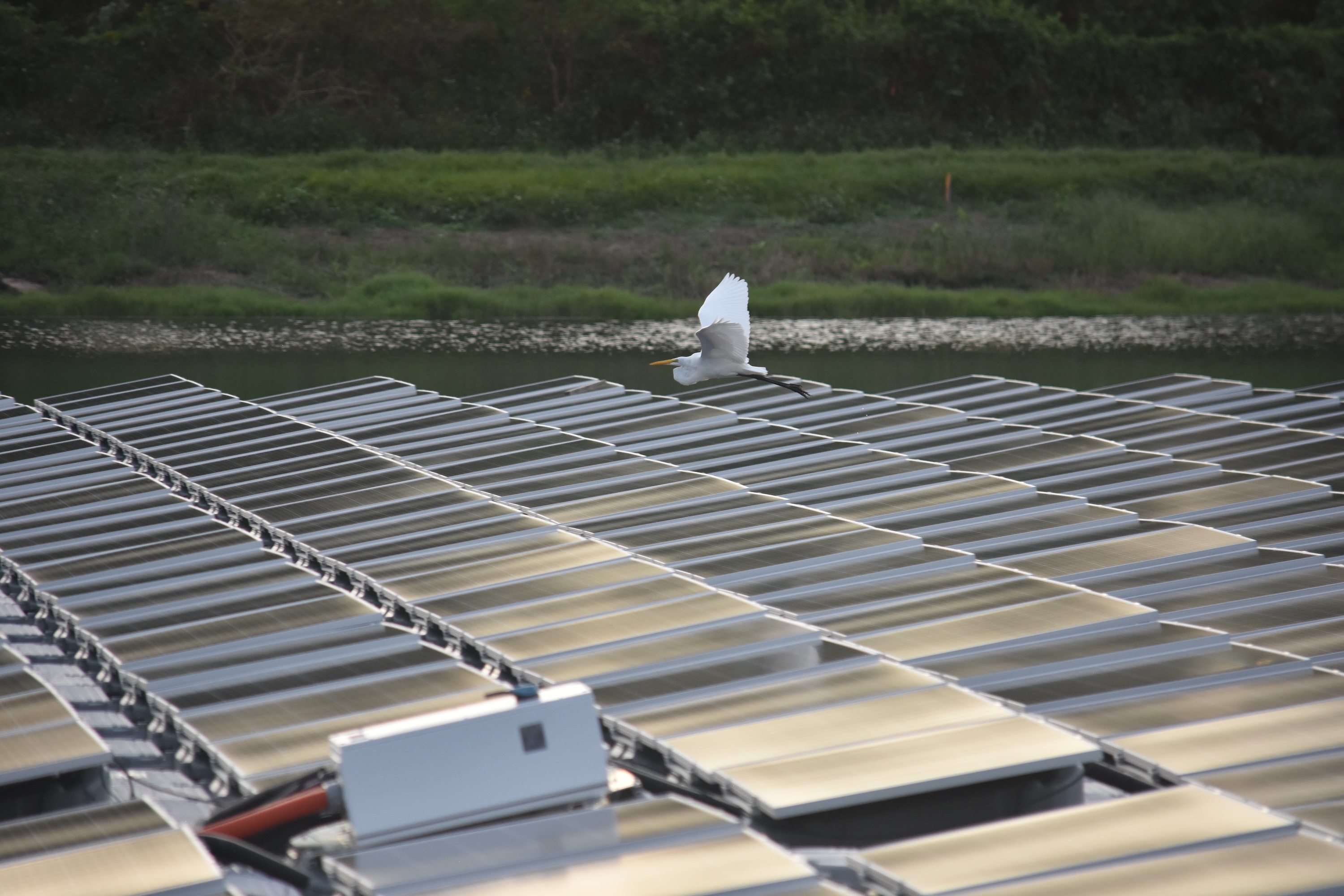
“Our team has been documenting such a diversity of bird behavior with floating PV, so we immediately knew this was a very important interaction, especially given the precipitous decline in waterbird numbers globally,” said senior author and UC Davis Professor Rebecca R. Hernandez, director of the UC Davis Wild Energy Center. “Humans are also responding to waterbirds on floating PV, sometimes with deterrence. We leveraged our team’s expertise in ecology and energy system science to identify risks and solution pathways such that waterbirds and floating PV can coexist.”
Critical threshold of development
The Wild Energy Center is conducting research to begin to answer some of those questions. During their field work, the authors have seen black-crowned night herons resting on a floating solar structure before dawn, double-breasted cormorants jockeying for a favorable site, black phoebes nesting under panels, and more.

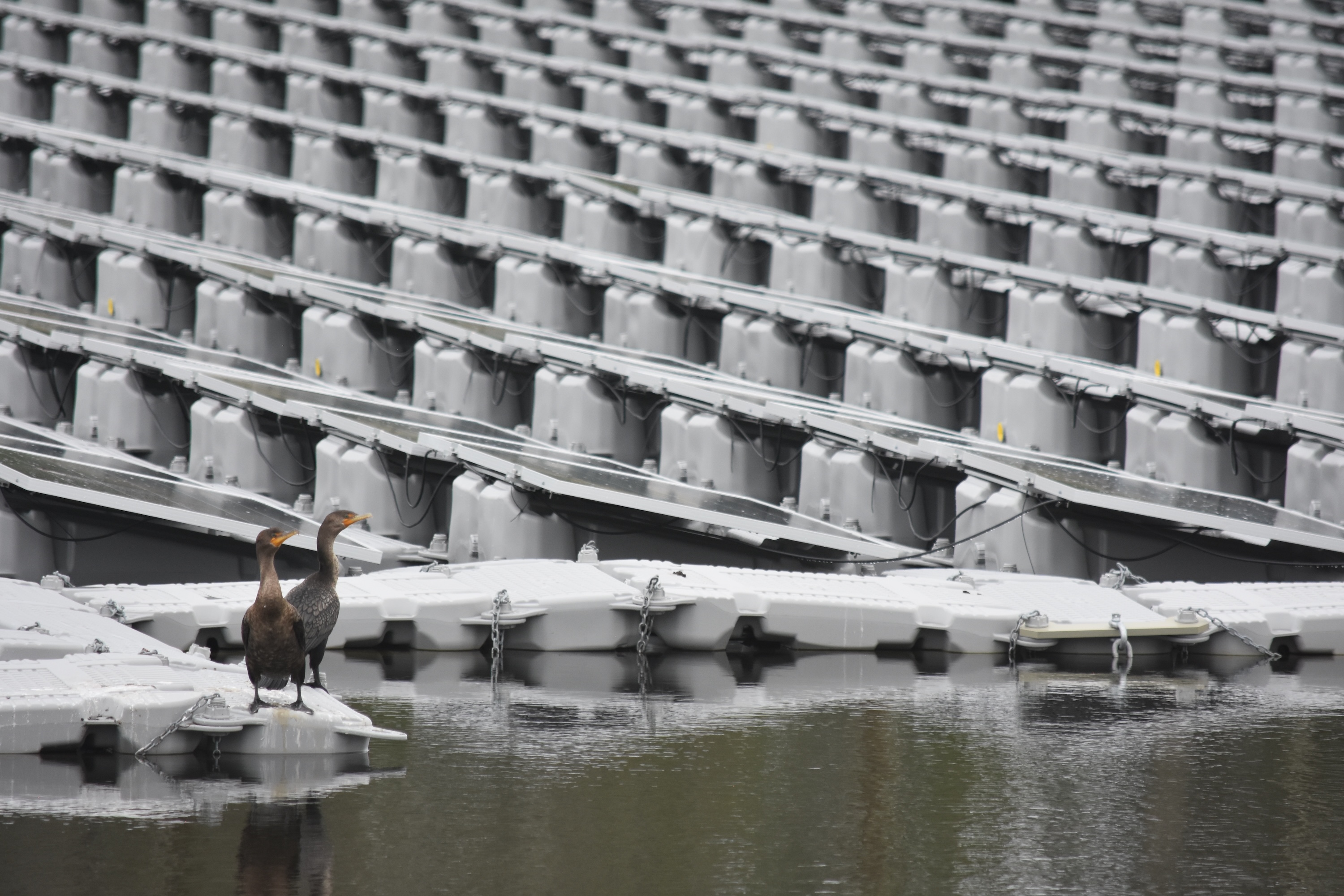
They note that while many types of wildlife use artificial water bodies, the authors focused on waterbirds because the birds interact above and below floating solar panels and are easy to observe.
So far, the scientists have observed mostly positive waterbird interactions with floating solar and additional benefits for people. For example, a farm that installs floating solar over an irrigation pond can save water by reducing evaporation, as well as produce clean energy without taking up cropland. Yet more research is required to fully understand the risks and benefits of introducing a large, relatively new technology into an aquatic environment.
“There are some things we wished we’d known before other kinds of renewable energy were developed,” said coauthor Emma Forester, a Ph.D. candidate with the UC Davis Land, Air and Water Resources department and the Wild Energy Center. “While we’re at this critical threshold of renewable energy development, we want to put more thought into the design that can benefit birds and other wildlife as we go forward.”
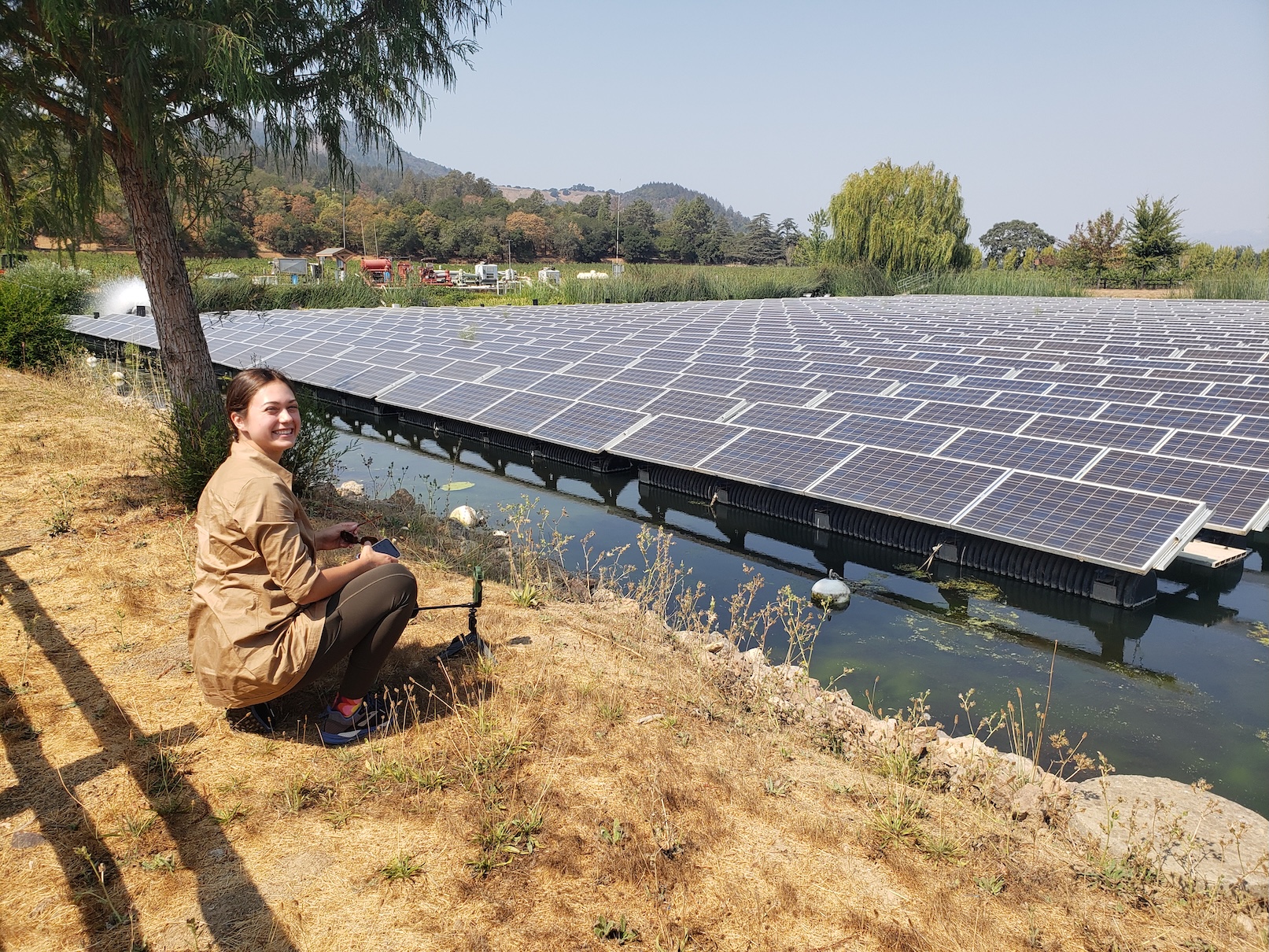
Additional coauthors include Alexander Cagle and Jocelyn Rodriguez of UC Davis, Tara Conkling and Todd Katzner of U.S. Geological Survey, Sandor Kelly of University of Central Florida, Giles Exley and Alona Armstrong of Lancaster University, and Giulia Pasquale and Miriam Lucia Vincenza Di Blasi of Innovation of Enel Green Power in Italy.
The study was funded by the UC Office of the President’s California Climate Action Seed Grant, Enel Green Power, U.S. Department of Energy, U.S. Bureau of Land Management and U.S. Geological Survey.
Media Resources
- Elliott Steele, UC Davis Land Air and Water Resources/UC Davis Wild Energy Center, epsteele@ucdavis.edu
- Emma Forester, UC Davis Land Air and Water Resources/UC Davis Wild Energy Center, ekforester@ucdavis.edu
- Rebecca R. Hernandez, UC Davis Land Air and Water Resources/UC Davis Wild Energy Center, rrhernandez@ucdavis.edu
- Kat Kerlin, UC Davis News and Media Relations, 530-750-9195, kekerlin@ucdavis.edu
Press kit of images. Download permitted with credit found in file name.
